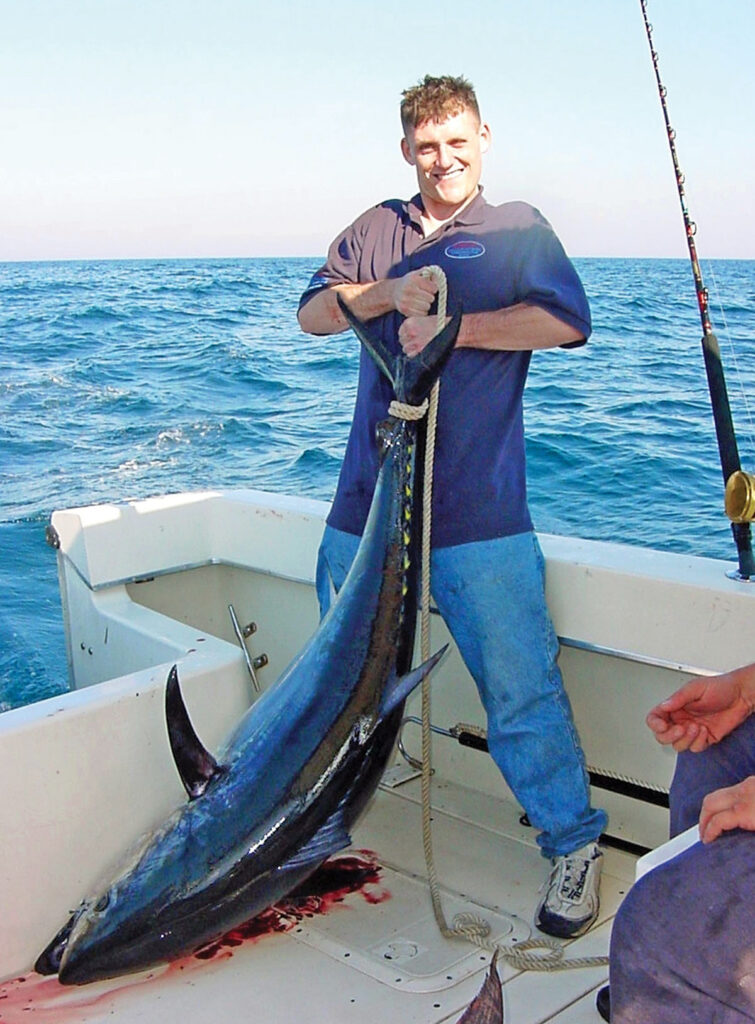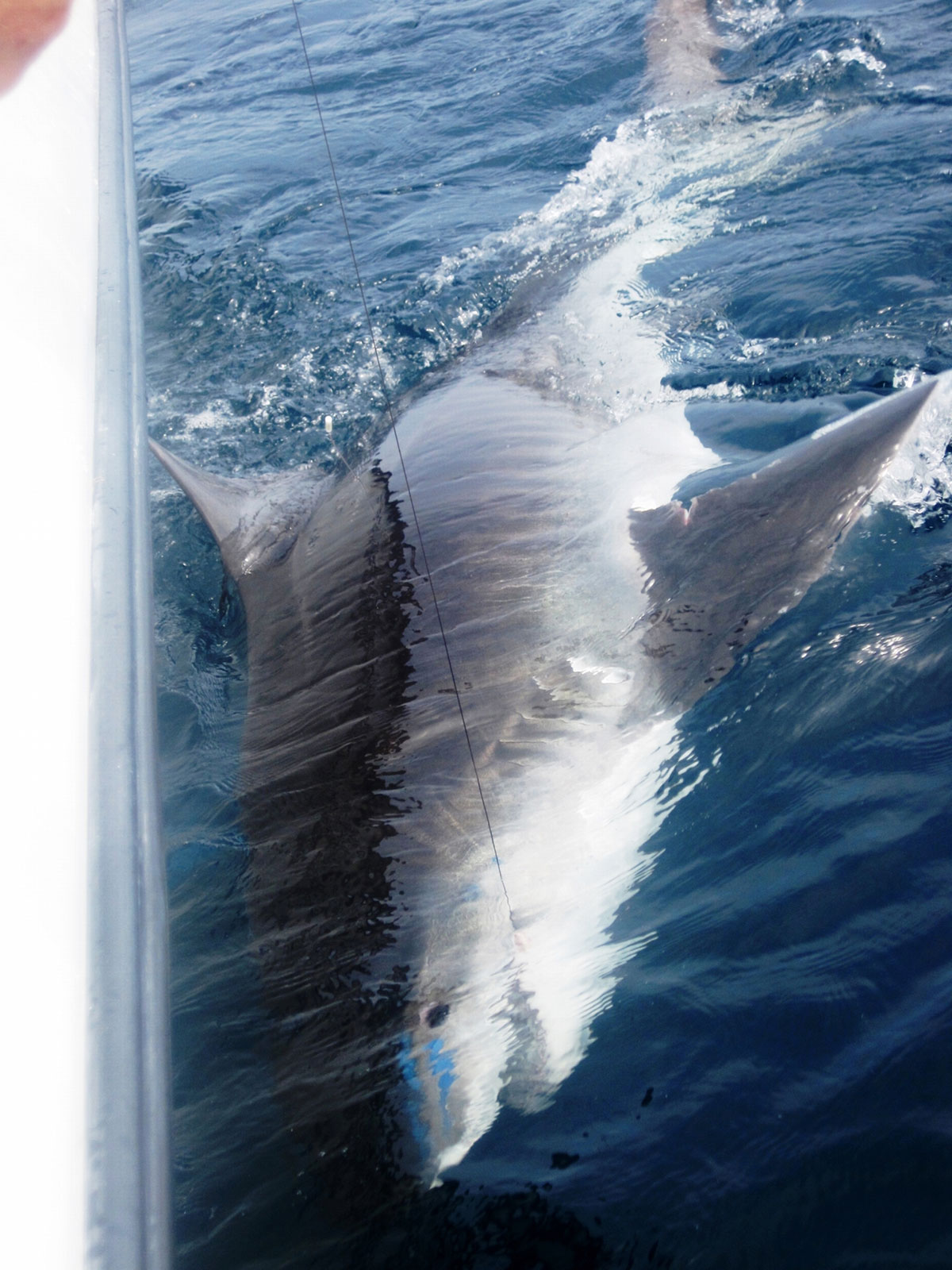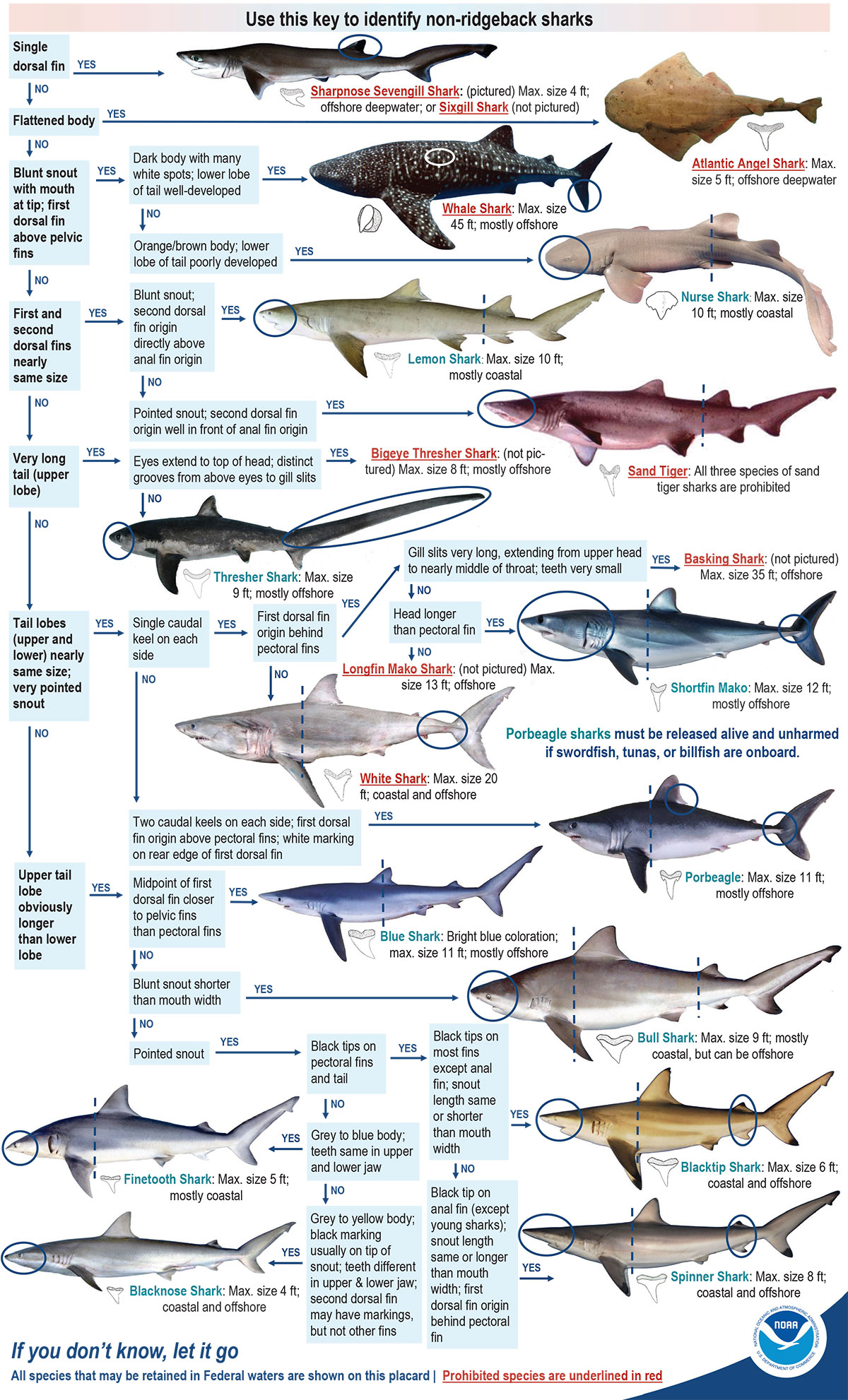
As I enter my fifth decade as an avid offshore angler and charter boat captain, I am looking forward to the 2024 bluewater season with the excitement and singular focus of a teenager… it never gets old!
But wanting to do something doesn’t necessarily make you ready to do it. There’s a lot of physical, mental, financial, equipment and tackle preparation that needs to happen first. However one of the most important steps in getting the gear ready for the first blitz is coming up to speed on the latest rules and regulations from our state and federal regulators.
It’s certainly not like the “good old days” when recreational anglers had more generous seasons and quotas with their catch and didn’t need as much permission to go fishing offshore. Now it’s an annual political process to see how things might have changed over the winter from those agencies that mandate the restrictions and limits on what we can catch, when we can catch them, along with size and bag limits.

Highly Migratory Rules
Since tuna are part of HMS (highly migratory species) management, you will need to apply for an HMS permit to fish for tunas, billfish, swordfish, or sharks. For recreational fishing, either the HMS Angling permit or HMS Charter/Headboat permit is required for the boat, which allows anglers aboard those vessels to target and keep bluefin, yellowfin, bigeye, skipjack, or albacore tunas, as well as sharks and billfish (white marlin, blue marlin and swordfish).
If you are targeting sharks, your HMS Permit requires a special shark endorsement. You’ll be prompted to view a video and take a quiz during the application process for an HMS Angling or HMS Charter/Headboat permit. The cost for an HMS Angling or Charter/Headboat permit is $26 and you can apply for one at hmspermits.noaa.gov and it needs to be renewed every year.
What’s interesting about the HMS permit is that it’s a “boat” permit that does not “travel” with the owner. If you have a permit for your vessel, but your buddy doesn’t and you head out for the day for some tuna or shark fishing, your permit doesn’t work on his boat, so he’ll have to get his own before the trip.

As an owner or operator of a vessel, you must also make the permit available for inspection upon request by any NOAA Fisheries or NOAA Fisheries-authorized personnel, which includes the USCG should they board your vessel when fishing outside of state limits.
As of this writing, the size and bag limits per species are as follows heading into the spring of 2024.
Bluefin Tuna – Recreational Permit and Charter/Headboat is one per vessel per day or trip, 27 inches to less than 73 inches (curved fork length). As an important note, the owner of a vessel permitted in the Atlantic HMS Angling or Atlantic HMS Charter/Headboat category must report the catch of all bluefin tuna discarded dead and/or retained under the Angling category quota through the NMFS electronic catch reporting system within 24 hours of the landing.
Yellowfin Tuna – Three fish per angler per day or trip, 27-inch minimum size (curved fork length).
Bigeye Tuna – no bag limit, 27-inch minimum size (curved fork length).
Albacore or longfin tuna – No bag limit, no size limit.
Skipjack Tuna – no bag limit, no size limit.
There are presently no size or bag limits for the other members of our local tuna clan, false albacore (aka, little tunny) and Atlantic bonito.
In terms of shark fishing, the first thing that all anglers – inshore or offshore – should remember is that are several “prohibited species” in our region, which include bigeye sand tiger; dusky; longfin mako; shortfin mako; sandbar (brown); sand tiger; and the white shark.
The species of shark that frequent the northeast waters that can be retained are as follows: blue; hammerhead; bull; tiger; porbeagle; oceanic whitetip; common thresher. As an interesting footnote, hammerhead and oceanic whitetip sharks cannot be retained if a swordfish, tuna, or billfish is onboard. Porbeagle sharks alive at haulback must be released unharmed if a swordfish, tuna, or billfish is on board.
The size and bag limits are one fish per boat per day or trip with the majority of these sharks having a 54-inch minimum size, using a straight line measurement from the snout to the fork of the tail. The one exception to this is the hammerhead that has a 78-inch minimum size.

Billfish Basics
While most offshore fishermen don’t target white and blue marlin for harvest, there may be times – like a completely exhausted billfish that clearly won’t survive release or during an offshore tournament – when knowing the harvest limits becomes imperative.
For blue marlin there is no bag limit, but the minimum size for retention is a lower snout to fork straight line measurement of 99 inches. White marlin also have no bag limit, with a minimum size of 66 inches using the same lower snout to fork straight line measurement. However, since the U.S. total landings of blue marlin, white marlin and roundscale spearfish combined total is limited to 250 fish annually, you will need to check the landings updates that are posted at www.fisheries.noaa.gov/atlantic-highly-migratory-species/atlantic-highly-migratory-species-landings-updates.
Yet another relevant regulation is that billfish cannot be retained if a hammerhead or oceanic whitetip shark is already on board or has been offloaded from the vessel. As for tournaments, most of the top billfish tournaments being held along the Atlantic Coast have their regulations for the size of a white or blue marlin which can be brought back to the scales.
As for the “other billfish” or swordfish, the bag limit for HMS permit holders as we enter the 2024 season is one per person per day or trip, with up to four fish per boat. The minimum size for retention is 47 inches from the lower snout to the fork in the tail using a straight line measurement.
For HMS Charter/Headboat permit holders, the minimum size is the same at 47 inches, but the retention is increased to one fish per paying passenger up to six total swordies per day or trip. I should only be so lucky to see six of these gladiators landed in one day on my boat! As with the marlin restrictions, swordfish cannot be retained if a hammerhead or oceanic whitetip shark is on board or has been offloaded from the vessel.

Tilefish Regulations
NMFS issues permits for tilefish (blueline and golden) in three categories, as follows:
Category 1: Commercial – Open access permit for commercial harvest and sale of tilefish. Commercial permit holders in the golden tilefish fishery wishing to exceed the incidental possession limit must also hold an Individual Fishing Quota (IFQ) Allocation Permit, issued to an individual.
Category 2: Recreational (Charter/Party) – Open access permit that allows vessel operators to take passengers for hire to recreationally fish for tilefish
Category 3: Private Recreational Tilefish Vessel Permit – Open access permit that allows private recreational vessels to fish for and/or retain tilefish in waters north of the North Carolina/Virginia line.
In terms of the size and possession limits when recreationally fishing for tilefish it’s all dependent on the specific species and the type of fishing vessel being used. For blueline tiles, the limit is three fish per person on a private boat; on U.S. Coast Guard “uninspected” for-hire vessel (charter boat) it’s five fish per person, per trip; while those on a U.S. Coast Guard “inspected” for-hire vessel (party boat) it’s seven fish per person, per trip.
The federal recreational blueline tilefish season is May 1 through October 31. There are no fish size limits in the recreational tilefish fisheries, and it should be noted that the captain and crew are not counted when checking the limit of pooled fish on a for-hire vessel.

As for recreational fishing for golden tilefish, the fishery is open year round with a recreational possession limit of eight fish per angler, per trip, with no size limit. Recreational anglers must use rod and reel fishing gear with a maximum of five hooks per rod.
For all charter/party permit holders, vessel trip reports (VTRs) must be maintained onboard the vessel and submitted to NOAA Fisheries for all fishing trips, regardless of species retained. Additionally, Charter/Party vessel permit owners and operators with a federal charter/party (for-hire) permit to fish for golden tilefish (and other Mid-Atlantic species) must submit the required VTR by electronic means (eVTR) through a software application approved by NOAA Fisheries. These electronic log VTRs must be submitted within 48 hours after entering port at the conclusion of a trip.
Owners and operators of vessels with the private recreational tilefish permit must submit the required VTR by NOAA Fisheries-approved electronic means for any trip when tilefish are the target and/or retained. These eVTRs must be submitted within 24 hours after the conclusion of a trip.
| HMS PERMITS |
| Remember to purchase the required tuna permit for your boat ahead of time so it’s not forgotten. Go to hmspermits.noaa.gov for the required Highly Migratory Species (HMS) permits, and remember to keep your daily catch reports. |
The recreational (charter/party) golden tilefish fishery does not have any Interactive Voice Response (IVR), Vessel Monitoring System (VMS), or specific observer requirements. However, all federally-permitted vessels, except private recreational vessels, are obligated to carry an observer if randomly selected by the National Observer Program. Keep in mind that outside of all of this HMS reporting, inshore angling catches (fluke, sea bass, stripers, porgies, etc.) come from the Marine Recreational Information Program (MRIP) which comes from dockside sampling coupled with the government’s fishing effort survey or FES, which is theoretically based on the national angler registry coming from state license or registration databases.
Other Considerations
Where The Fisherman readers are quite familiar with the New England Fishery Management Council or perhaps the Mid-Atlantic Fishery Management Council, there are several other management councils in the coastal United States that manage fisheries within their region. That’s important to remember because mahi-mahi are currently managed by the South Atlantic Fishery Management Council. According to Dolphin/Wahoo Amendment 10 that was passed in 2022, current bag limits for recreational and charter/headboat fisheries for waters from Maine to Florida are 10 fish per person per day, with a limit of 54 fish for private vessels. The requirements for special federal vessel operator cards for both the dolphin and wahoo commercial and charter vessel/headboat permitted vessels has been eliminated.
Wahoo are another species managed by the South Atlantic Fishery Management Council, and their mandates for the conservation of that speedster results in our current bag limit here in Northeast waters being two fish per person per day, with no size limit.
As for another southern visitor making its presence known more regularly for us northern anglers, especially from mid-July to late September, is the cobia. I have seen cobia swimming along the beach and have also encountered them in near offshore waters when shark drifting, around sea buoys, floating debris, weed lines and other flotsam.

In Rhode Island, New York, New Jersey and Delaware, the cobia season is open year-round with a 37-inch size limit and one fish possession limit (one per angler, one per boat).
The basis of much of our fisheries management process here in the United States and the creation of all of these regional management councils is the 1976 Magnuson Stevens Fisheries Conservation and Management Act which essentially passed to kick foreign fleets out of our American waters. As such, our state waters extend out to 3 nautical miles from the coast, with federal waters encompassing the United States’ Exclusive Economic Zone (EEZ) going out to 200 nautical miles into the Atlantic where U.S. Fisheries laws apply. That said, there is a “gray zone” between what the states say you can do with certain “conflict species” when compared to what the federal government says.
One of these conflict species is striped bass, which can be caught in-season in state waters, but neither be targeted nor retained in federal waters outside of a state’s three-mile limit. This always presents an interesting conundrum for some Long Island based anglers that fish either east off Block Island or west in the NY/NJ Bight area and might cross over into federal waters at some point during the trip home while retaining stripers in the fishbox. While there is a safe transit zone for doing this around Block Island, there is no such safety net in any other waters in The Fisherman’s readership. Stray 100 yards or more south or east of state waters at your own peril. I know of quite a few folks who’ve been boarded by the U.S. Coast Guard who have paid hefty fines for traveling outside the line looking for other species after putting a couple of stripers in the box after a morning of inshore fishing.
Bottom line, know the rules of the road before you hit the highway!
| KNOW YOUR SHARKS |
| If you are targeting sharks this season, your HMS Permit requires a special shark endorsement. You’ll be prompted to view a video and take a quiz during the application process for an HMS Angling or HMS Charter/Headboat permit. One interesting tool to aid in your shark ID is this shark identification chart courtesy of NOAA Fisheries.
|






